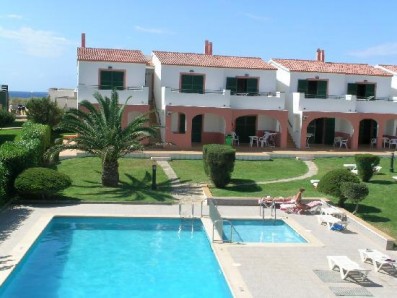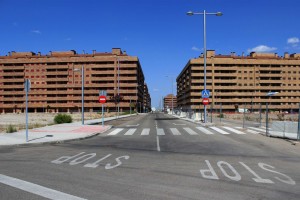
Interest in Spanish property is picking up, both domestically and among foreign buyers
What a difference two years makes. Now, it is never really wise to compare Daily Mail headlines with Financial Times ones, but a story published on the FT over the weekend struck a notable chord.
The FT reports that the town of Seseña, 35km south of Madrid, has begun to pique the interest of potential property buyers. This news is significant because back in 2012 Seseña stood for all that was wrong with Spanish property: incomplete, overpriced, empty and unnecessary. The never-to-be-inhabited overspill suburb of Madrid became the stick with which media outlets beat Spain’s property market…
The Daily Mail really went to town on the town in this article. But fast-forward a little over 24 months and the outlook is much brighter. Amid interest in the homes and commercial properties that lie empty in Seseña, Spain’s wider property industry has sprung to its feet after years on its knees.

The unfinished ‘ghost town’ of Seseña is stirring into life
In Seseña itself, many of its 33 apartment blocks stand empty, with would-be bodegas and bars bricked up, their doors never flung open even for opening night. But a local real estate agency has just sealed two transactions, with a handful more on the horizon as Spain’s capital once again begins to generate jobs, prompting young professionals to seek affordable property within commuting distance. As the banks begin to lend once more, the whole cycle begins to squeak, once again, into gear.
All over Spain it is a similar story. Official data released last month revealed that house prices have risen by an average of 0.8 per cent in the second quarter of the year – the first such rise since 2008. In July, the number of mortgages approved was 29 per cent higher than the same month in 2013.
“Demand is alive and it is growing,” said Luis Martín Guirado, the director of Spain’s ‘bad bank’, Sareb. Having taken on the debts of more than 40,000 properties during the crash, Sareb is now releasing up to 900 homes back on to the market every month, with stable house prices that are a third below the peak of 2007 – and likely to only increase sensibly and sustainably.
“There are many people who kept their job during the crisis but who spent years worrying about losing it,” added Guirado. “Now they perceive that the economy is turning, they see that financing is available and that prices have fallen – so they trade up from a one-bedroom flat to a two-bedroom flat.”
Domestic demand for Spanish property contracted drastically during those lean years, and was followed by a drop in demand from overseas buyers. However, foreign interest in Spanish property has since recovered; not quite to the levels seen before the crash, but certainly to a point where talk of recovery in the sector need not be hushed. There is real confidence in Spanish property as 2014 heads into its final quarter.
Elsewhere, the Spanish economy has also picked up positively, with exports, industry, tourism and the construction sector all enjoying a positive year – with a sunnier 2015 to come, according to most experts.
However, there is still some way to go before Spain manages to balance its property market, with demand still some way short of supply. In 2006, at the apex of the country’s housing boom, Spain built more new properties than the UK, Germany, France and Italy combined. Those good times soon came to an end, leaving the country with up to 600,000 empty properties.
This situation will serve to puncture new build growth for at least five years, say experts – but it will also keep a lid on prices, making Spanish property more affordable than it has been for a while.
“Excess supply will keep prices close to recent lows and the recovery will be steady,” said an analyst report by investment bank UBS last week.
Still, a slow and unspectacular recovery is better than a crash or a boom-bust cycle. Right now, two-bedroom apartments are selling for less than €80,000 in Seseña, although currently local amenities remain a little lacking.
But things are slowly changing reports the FT, with local residents remarking that the buzz and vibrancy that many developers had hoped to artificially create back in 2006 is beginning to take root.
 en
en



 Vlaams-Nederlands
Vlaams-Nederlands
0 Comments
Leave a Comment
DISCLAIMER
The opinions and comments expressed by contributors to this Blog are theirs alone and do not necessarily reflect the views of VIVA Homes Under the Sun Ltd, any of its associated companies, or employees; nor is VIVA to be held responsible or accountable for the accuracy of any of the information supplied.
Have you got something to say?